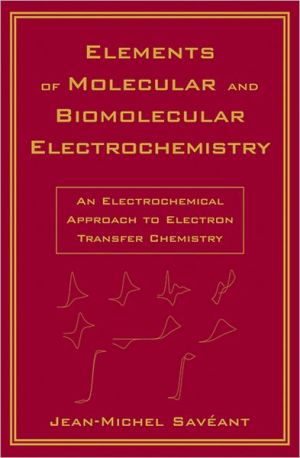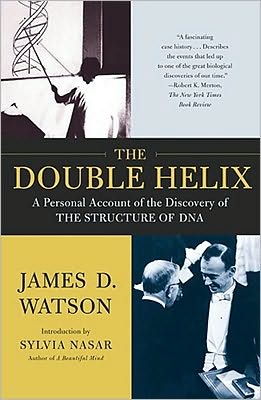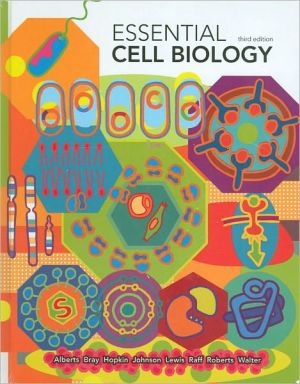Elements of Molecular and Biomolecular Electrochemistry: An Electrochemical Approach to Electron Transfer Chemistry
This book is based on the George Fisher Baker Lecture given by Jean-Michel Savéant at Cornell University in Fall 2002.\ * The first book focusing on molecular electrochemistry\ * Relates to other fields, including photochemistry and biochemistry\ * Outlines clearly the connection between concepts, experimental illustrations, proofs and supporting methods\ * Appendixes to provide rigorous demonstrations to prevent an overload of algebra in the main text\ * Applications-oriented, focused on...
Search in google:
This book is based on the George Fisher Baker Lecture given by Jean-Michel Savéant at Cornell University in Fall 2002.* The first book focusing on molecular electrochemistry* Relates to other fields, including photochemistry and biochemistry* Outlines clearly the connection between concepts, experimental illustrations, proofs and supporting methods* Appendixes to provide rigorous demonstrations to prevent an overload of algebra in the main text* Applications-oriented, focused on analyzing the results obtained rather than the methodology
PrefacexiiiChapter 1Single Electron Transfer at an Electrode11.1Introduction11.2Cyclic Voltammetry of Fast Electron Transfers. Nernstian Waves21.2.1One-Electron Transfer to Molecules Attached to the Electrode Surface21.2.2One-Electron Transfer to Free-Moving Molecules51.3Technical Aspects101.3.1The Cyclic Voltammetry Experiment. Faradaic and Double-Layer Charging Currents. Ohmic Drop101.3.2Other Techniques. Convolution201.4Electron Transfer Kinetics281.4.1Introduction281.4.2Butler-Volmer Law and Marcus-Hush Model301.4.3Extraction of Electron Transfer Kinetics from Cyclic Voltammetric Singals. Comparison with Other Techniques441.4.4Experimental Testing of the Electron Transfer Models571.5Successive One-Electron Transfers vs. Two-Electron Transfers621.5.1Introduction621.5.2Cyclic Voltammetric Responses. Convolution641.5.3Response of Molecules Containing Identical and Independent Reducible or Oxidizable Groups691.5.4An Example of the Predominating Role of Solvation: The Oxidoreduction of Carotenoids701.5.5An Example of the Predominating Role of Structural Changes: The Reduction of trans-2,3-Dinitro-2-butene73References and Notes75Chapter 2Coupling of Electrode Electron Transfers with Homogeneous Chemical Reactions782.1Introduction782.2Establishing the Mechanism and Measuring the Rate Constants for Homogeneous Reactions by Means of Cyclic Voltammetry and Potential Step Chronoamperometry802.2.1The EC Mechanism802.2.2The CE Mechanism922.2.3The Square Scheme Mechanism942.2.4The ECE and DISP Mechanisms962.2.5Electrodimerization1022.2.6Homogeneous Catalytic Reaction Schemes1062.2.7Electrodes as Catalysts1192.2.8Numerical Computations. Simulations. Diagnostic Criteria. Working Curves1212.3Application of Redox Catalysis to the Kinetic Characterization of Fast Follow-up Reactions1252.3.1Principle and Achievements of the Method1252.3.2Comparison with Fast Cyclic Voltammetry and Laser Flash Photolysis1282.3.3Determination of the Standard Potential for the Formation of Very Unstable Primary Intermediates1292.3.4Redox Catalysis of Electrocatalytic Processes1312.4Product Distribution in Preparative Electrolysis1322.4.1Introduction1322.4.2General Features1332.4.3Product Distribution Resulting from Competition Between Follow-up Reactions1362.4.4The ECE-DISP Competition1382.4.5Other Reactions Schemes1392.5Chemical Classification and Examples of Coupled Reactions1402.5.1Coupling of Single Electron Transfer with Acid-Base Reactions1402.5.2Electrodimerization1482.5.3Electropolymerization1512.5.4Reduction of Carbon Dioxide1522.5.5H-Atom Transfer vs. Electron + Proton Transfer1542.5.6The S[subscript RN]1 Substitution. Electrodes and Electrons as Catalysts1582.5.7Conformational Changes, Isomerization, and Electron Transfer1632.6Redox Properties of Transient Radicals1672.6.1Direct Electrochemical Approach1672.6.2Application of Laser Flash Electron Injection1722.6.3Photomodulaltion Voltammetry1752.6.4Application of Redox Catalysis1772.7Electrochemistry as a Trigger for Radical Chemistry or Ionic Chemistry178References and Notes179Chapter 3Electron Transfer, Bond Breaking, and Bond Formation1823.1Introduction1823.2Dissociative Electron Transfer1843.2.1Thermodynamics. Microscopic Reversibility1843.2.2The Morse Curve Model1873.2.3Values of the Symmetry Factor and Variation with the Driving Force1923.2.4Entropy of Activation1933.3Interactions Between Fragments in the Product Cluster1943.3.1Influence on the Dynamics of Dissociative Electron Transfers1953.3.2Typical Example: Dissociative Electron Transfer to Carbon Tetrachloride1973.3.3Stabilities of Ion-Radical Adducts as a Function of the Solvent1993.3.4Dependency of In-Cage Ion-Radical Interactions on the Leaving Group2003.4Stepwise vs. Concerted Mechanisms2033.4.1Introduction2033.4.2Diagnostic Criteria2043.4.3How Molecular Structure Controls the Mechanism2063.4.4Passage from One Mechanism to the Other upon Changing the Driving Force2093.4.5Photoinduced vs. Thermal Processes2133.4.6Does a Concerted Mechanism Mean That the Intermediate "Does Not Exist"?2163.4.7[pi] and [sigma] Ion Radicals. Competition Between Reaction Pathways2163.5Cleavage of Ion Radicals. Reaction of Radicals with Nucleophiles2183.5.1Introduction2183.5.2Heterolytic Cleavages. Coupling of Radicals with Nucleophiles2183.5.3Homolytic Cleavages2253.6Role of Solvent in Ion-Radical Cleavage and in Stepwise vs. Concerted Competitions2293.6.1Introduction2293.6.2Experimental Clues2303.6.3A Simplified Model System2353.7Dichotomy and Connections between S[subscript N]2 Reactions and Dissociative Electron Transfers2393.7.1Introduction2393.7.2Experimental Approaches2403.7.3Theoretical Aspects244References and Notes248Chapter 4Molecular Catalysis of Electrochemical Reactions2514.1Introduction2514.2Homogeneous Molecular Catalysis2524.2.1Contrasting Redox and Chemical Catalysis2524.2.2The Reduction of Vicinal Dibromides. Outer- and Inner-Sphere Catalysts. Rates and Stereoselectivity2544.2.3Homogeneous Chemical Catalysis of the Reduction of Carbon Dioxide. Synergistic Effect of Bronsted and Lewis Acids2604.2.4Two-Step Chemical Catalysis of the Reduction of Alkyl Halides by Low-Valent Cobalamins and Cobinamides2644.3Supported Molecular Catalysis (Immobilized Catalysts)2684.3.1Redox and Chemical Catalysis at Monolayer and Multilayer Coated Electrodes2684.3.2Catalysis at Monolayer Coated Electrodes2704.3.3Permeation Through Electrode Coatings. Inhibition2794.3.4Electron Hopping in Assemblies of Redox Centers2844.3.5Catalysis at Multilayer Coated Electrodes2874.3.6Combining an Electron-Shuttling Mediator with a Chemical Catalyst in a Multilayer Electrode Coating292References and Notes296Chapter 5Enzymatic Catalysis of Electrochemical Reactions2985.1Introduction2985.2Homogeneous Enzymatic Catalysis2995.2.1Introduction2995.2.2The Ping-Pong Mechanism. Kinetic Control by Substrate and/or Cosubstrate3005.2.3A Model Example: Glucose Oxidase with Excess Glucose3065.2.4Molecular Recognition of an Enzyme by Artificial One-Electron Cosubstrates3075.2.5Deciphering a Complex Electroenzymatic Response: Horseradish Peroxidase3115.3Immobilized Enzymes in Monomolecular Layers3155.3.1Introduction3155.3.2The Ping-Pong Mechanism with an Immobilized Enzyme and the Cosubstrate in Solution3155.3.3Antigen-Antibody Immobilization of Glucose Oxidase. Kinetic Analysis3235.3.4Application to the Kinetic Characterization of Biomolecular Recognition3255.3.5Immobilized Horseradish Peroxidase3325.3.6Immobilization of Both the Enzyme and the Cosubstrate. Electron Transfer and Electron Transport in Integrated Systems3365.4Spatially Ordered Multimonomolecular Layered Enzyme Coatings3405.4.1Step-by-Step Antigen-Antibody Construction of Multimonomolecular Layer Enzyme Coatings3405.4.2Reaction Dynamics with the Cosubstrate in Solution. Evidence for Spatial Order342References and Notes346Chapter 6Appendixes3486.1Single Electron Transfer at an Electrode3486.1.1Laplace Transformation. Useful Definitions and Relationships3486.1.2Cyclic Voltammetry of One-Electron Nernstian Systems. Current-and Charge-Potential Curves3486.1.3Double-Layer Charging in Cyclic Voltammetry. Oscillating and Nonoscillating Behavior3536.1.4Effect of Ohmic Drop and Double-Layer Charging on Nernstian Cyclic Voltammograms3576.1.5Potential Step and Double Potential Step Chronoamperometry of Nernstian Systems3616.1.6Overlapping of Double-Layer Charging and Faradaic Currents in Potential Step and Double Potential Step Chronoamperometry. Oscillating and Nonoscillating Behavior3616.1.7Solvent Reorganization in Marcus-Hush Model3636.1.8Effect of the Multiplicity of Electronic States in the Electrode3686.1.9Cyclic Voltammetry of Two-Electron Nernstian Systems. Disproportionation3716.2Coupling of Homogeneous Chemical Reactions with Electron Transfer3736.2.1The EC Mechanism3736.2.2The CE Mechanism3796.2.3Double Potential Step Responses for Processes Involving First- or Second-Order Follow-up Reactions3826.2.4The ECE and DISP Mechanisms3836.2.5Electrodimerization3916.2.6Competition Between Dimerization of and Electron Transfer to Intermediates3986.2.7Homogeneous Catalysis4036.2.8Product Distribution in Preparative Electrolysis4146.3Electron Transfer, Bond Breaking, and Bond Formation4386.3.1Contribution of the Cleaving Bond Stretching to Internal Reorganization of the First Step of the Stepwise Mechanism4386.3.2Morse Curve Model of Intramolecular Dissociative Electron Transfer4396.4Analysis of Supported Molecular Catalysis by Rotating Disk Electrode Voltammetry and Cyclic Voltammetry4416.4.1Catalysis at Monolayer Electrode Coatings4416.4.2Inhibition of Electron Transfer at Partially Blocked Electrodes4446.4.3Equivalent Diffusion and Migration Laws for Electron Hopping Between Fixed Sites4456.4.4Catalysis at Multilayered Electrode Coatings4466.5Enzymatic Catalysis Responses4526.5.1The Ping-Pong Mechanism in Homogeneous Enzymatic Catalysis4526.5.2Catalysis and Inhibition in Homogeneous Systems4576.5.3Catalysis at Multilayered Electrode Coatings462References and Notes469Glossary of Symbols470Index481
\ From the Publisher"...as a roadmap to the field and a source of key information, it is invaluable...certain to be the definitive treatment for years to come." (Journal of the American Chemical Society, January 10, 2007)\ \ \








